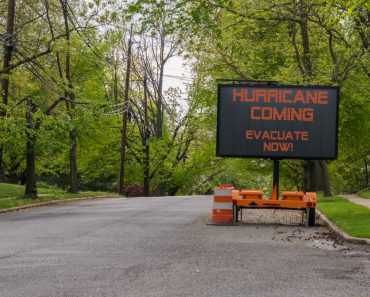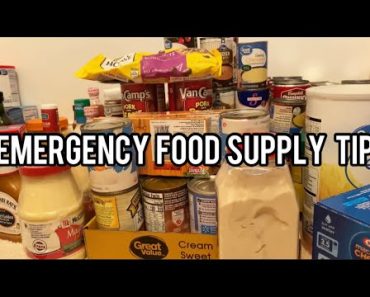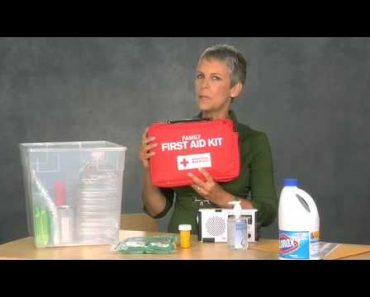For some people, there is no such thing as getting lost. Those are the kinds of people who can easily find their way around a city as they can in a natural setting. Let me start by saying I am not one of those people. However, my husband is. Over the years, I have gleaned both insights and experiences that can help the directionally challenged.
Preparing to Navigate
In one sense, many of the problems associated with being directionally challenged come from both your perception and those of the people around you. Unfortunately, when your expectations of yourself and your abilities decrease, then you will do worse and wind up creating your reality. Before you go out for a walk or get behind the wheel, it is essential to be relaxed and in a positive mental state.
Here are some things that will make it easier to feel comfortable:
- First, don’t automatically believe that navigating in unusual directions (aka “getting lost”) will always cost time and effort without any reasonable return. I’ve discovered all sorts of excellent shortcuts, stores, and other places that turned out to be very useful later on. Even if you do wind up spending more time right now on a navigation issue, it could easily save you time and money later on if you pay attention to what is around you and what you can learn from it.
- Second, accept the fact that you may be re-routed from a known path to a destination or that you may wind up getting off track for some other reason. Start early rather than leaving yourself just enough time to get to your destination. At a minimum, leave yourself one hour for every 15 minutes of expected travel (I’ll explain why later). This way, even if you make it to your destination in the expected time, you have plenty of time to relax and prepare for whatever you are planning to do at your destination. For example, years ago, when I commute from a country setting into the city, I started at least one hour early. Since there was a gym near my workplace, I purchased a subscription and spent 45 minutes there before going into work on the days when I had no navigation problems.
- Third, make sure you are focused and relaxed. Turn off the cell phone, the radio, and anything else that will make you feel stressed. If you tend to look at the dashboard clock and get stressed by the time passing, put a piece of tape over it. When you are in the car, you should focus entirely on your driving. At most, use some music from CDs or other sources that won’t have commercials or other interruptions that will spoil your mood. Unless you are driving in bad weather or need to know about the traffic ahead, it is best to keep the radio off. If you must listen for these kinds of advisories, look for an all-news station or even a cell phone app that only delivers traffic alerts. Just make sure that all the other phone functions are disabled so that you aren’t distracted by email pings or something else that is unimportant while you are driving.
- Fourth, always have water and comfort food available. Contrary to popular belief, caffeine or sugar are not the best things to consume while driving and trying to avoid directional problems. In many cases, anything that increases your stress levels will make it harder to figure out which direction will be best to navigate in. If you need sugar, go for a fruit drink over soda. If you need caffeine, go for tea or a mid-decaf coffee. Comfort food is also beneficial in limited amounts. It doesn’t matter if your comfort food is a chocolate bar, a hamburger, or a piece of the pie. Have it on hand and ready to consume if you have to pull off the road and take stock of your situation. Remember, when you allow at least 1 hour extra for every 15 minutes of travel time, you can easily pull off the road to someplace safe and get your bearings.
- Fifth, Put safety ahead of direction. These days, you never know if the people around you are using drugs that impair their judgment, if they are talking on the phone, texting, or even watching TV while driving. These distractions do not make for polite drivers, let alone safe ones. When you are directionally challenged, there is a natural tendency to slow up at stop signs, exits, and other areas where it may take you longer to process what you are looking at and figure out what direction to take. Unfortunately, when other people around you are distracted and irritated because they have to pay a little more attention to what you are doing, that ½ to 1 second is enough for them to barrel around you, cut you off, or do something that prevents you from entering the lane you need to be in. Rather than put yourself in that situation, stay in your lane and with the flow of traffic. If you have to go past a turnoff, then, by all means, do so. Stop off somewhere, have a bite to eat, and then navigate back to where you need to make your turn. The worst thing you can do is suddenly realize that you need to be entering a merge lane and then try to swoosh over. I’ve seen dozens of multi-car pileups happen that way. It would not surprise me if many of those accidents were caused by people who tried to get into the proper lane for a merge or an exit without accounting for distracted drivers planning to occupy the same space.
Things You Should Always Carry
Most people don’t worry about whether or not they will return home when going to a known destination. The situation is a little different for those who are directionally challenged.
As a case in point, I used to work within 2 miles of a post office and only had to drive up the road a piece to get to it. Well… one fine day, I decided to go mail something during my lunch break. Since I didn’t want to go through the city and a whole plethora of one-way streets that all went the wrong way, I navigated out to the highway instead. Somehow or other, I wound up leaving the state I was in, crossed through another state, and entered another one before I got reoriented to my home state.
While this particular instance only took a few hours to sort out, I was glad that I had the following items with me just in case I needed them:
- Camping Gear – when you are tight on money, spending $60 – 100 a night for a hotel room isn’t an option. On the other hand, there are many free camping sites throughout the United States where you can park your vehicle and spend the evening. At the very least, once you have a place to take shelter and get a grip on your situation, it will be easier to figure out the best way to get home.
- Blankets and a Pillow – just because you are directionally challenged, that doesn’t mean you will always be driving through remote areas. Whether you are going through a city or on the thruway, it is vital to keep blankets and a pillow in your car if you have to pull over and get some rest before continuing your journey. Usually, you will find free rest stops on Thruways that are clearly marked and easy enough to get into. Insofar as cities, there may or may not be rest stops or other areas where you can pull over without being disturbed for a few hours.
- Pre-cooked food and food warmers – it doesn’t matter if you keep MRE kits in your vehicle or prepare a bit of extra food to take along. The important thing is that you have at least two or three square meals on hand so that you don’t have to resort to convenience stores or the kinds of junk food that will make you sick. The food you are accustomed to will also help you feel calmer as you try to get back to a known area.
- Tablet or smartphone with WIFI – today, many stores, restaurants, and thruway exit facilities offer free WIFI. Once you figure out where you are, you can always use the internet to find out some things about the area and places of interest. If you can follow directions provided by sites like Google maps, this will also be an excellent time to sort out a path back to your original destination. This includes checking off options that help you stay away from toll booths, out of major cities, or other areas where you feel that you will have a hard time staying on track. Just make sure that you have a PDF saver on your browser app so that you can save the directions and pull them up as needed once you get back on the road. If you have a portable printer on hand, this will be an excellent time to use it.
- Bluetooth/Hands-Free Kit for Your Cell Phone – Depending on your situation, you may or may not be able to call someone that can give you helpful directions that will get you to your destination. Under these circumstances, a hands-free headset for your phone can help you keep your hands on the steering wheel where they belong. It will also be of some help to have a dashboard mount for your phone to stay steady while you are driving.
- Roadside Emergency Kit – From flat tires to a red check engine light, rest assured that your car may pick the worst moment possible to break down. Even if you have a roadside assistance service plan with your vehicle, you may still need to set up flares or other devices around your car to ensure it remains as safe as possible. Aside from that, if the problem is relatively simple to attend to, you can always do it yourself and save some time waiting for other assistance to arrive.
- First Aid Kit – It never hurts to have some medication on hand for headaches, nausea, or anything else that may make it harder to concentrate or be at your best. If you take prescription drugs, make sure you carry enough for at least one week away from home.
- Enhanced Roadside Assistance Plan – Look for plans that include calling when you are lost and getting directions from a live person that will work with you in real-time. No matter how directionally challenged you may be, these people can usually help you get back on track in situations where you are truly stumped.
- Trunk Locker for Your Weapons – no matter how much some states trample on the Second Amendment, the fact remains gun rights advocacy groups aren’t likely to help you when you pass through an area that has regulations in place about how guns or other weapons are stored in your vehicle. Just because you are passing through or lost doesn’t mean you won’t draw the attention of law enforcement and wind up getting arrested because you are not allowed to carry a gun or certain kinds of knives in the area. It is best to at least have a gun locker in your vehicle so that you can store guns, knives, and other weapons as safely as possible while you are traveling through these areas. Needless to say, using your voice and your vote before these problems arise is also very important. This includes making sure that anyone who is raped or otherwise injured in a gun-free zone or restricted gun area is encouraged and supported in the decision to express themselves in the media and to sue both the establishment and the governments that pass these kinds of laws. When traveling through these areas, it will also be to your advantage to spend as little money as possible. Fortunately, when you carry the basic essentials in your car, you can avoid shopping in areas with these kinds of laws.
Some Items that May or May not Help
Despite conventional wisdom about navigation, I’ve rarely, if ever, found the following devices useful. The bottom line is when you are navigation challenged, you may be better off paying attention to the cues around you rather than using the following devices:
- Paper maps – even if you can locate where you are in relation to where you want to go, maps can do more harm than good for directionally challenged people. Unless you can also decipher the compass rose on the map and then relate that to your surroundings, the map will be virtually useless. More than once, I’ve been able to pinpoint locations on a map, only to find out that I wound up going in a completely wrong direction. I was and remain much better off navigating based on road signs and other cues. While I do use maps to find road sign cues (such as town and city names) between where I am and where I’m going, I don’t use them at all for figuring out which roads to take. That all being said, web-based maps that include satellite images can be more helpful. At the very least, you can virtually navigate along the roads and look for landmarks that will help you determine if you are in the right area and also going in the right direction.
- Compasses – actually, I do have a good quality compass and know how to use it. While a compass can help you figure out a general direction to go in, it won’t do much more without correlation with a map. If you are map challenged (like I am), don’t waste time or effort trying to match up with the compass. You can still use the compass to head in a general direction, and then pay attention to how far you have traveled and see if you arrive at an interim landmark on your listing of the area.
- GPS systems – if there is one device I absolutely hate, it is the GPS system. Not only do they give you a false sense of security, but blindly following them can put you in some very uncomfortable traffic patterns. Over the years, I’ve had more than a few situations where the GPS said to change a lane or something, only to realize that if I did it, I’d be in the middle of a traffic knot or something else I didn’t want to get into. Even though the GPS is capable of compensating for lost turns, it can still be very nerve-wracking. While I have never had the GPS lead me down dead-end roads or into other problems, the maps the GPS is based on can still be wrong and leave you with more problems than you started with.
5 Tips and Tricks for Assessing Travel Routes
Sometimes it feels like it isn’t so much that I am directionally challenged as it is some situations just make it easier to get off track than others. As a result, there are a few things that I try to avoid, as well as some things that I do in order to navigate as easily as possible from one point to another.
- Avoid Traffic Circles – Even though I am a big fan of those old-fashioned merry-go-rounds, traffic circles are both an annoyance and a puzzle. No matter how you look at it, someone is always cutting into the wrong lane, or something is in the way of the exit that looks like the right one. I have literally crawled at under five mph through traffic circles just to make my exit and be sure that I am not entering the wrong lane. If you must go through a traffic circle, do so during hours when there is as little traffic as possible. Take some extra time to make sure you know where all the lanes go and where all the exits lead. Unfortunately, today, more towns and cities are including traffic circles because they are supposed to be safer and more efficient than traffic lights. Always attend town and municipal meetings to make sure you know ahead of time about any plans to install this feature in your area. Do not hesitate to speak up and say you are opposed and do some research on just how dangerous they can be. In a world where distracted drivers are watching soap operas and such while crashing into school buses, we don’t need traffic circles to make matters even worse.
- Avoid One Way Streets – if you have a tendency to go in the wrong direction, one-way streets can be an absolute nightmare because they never seem to go in the same direction that you find out you need to go in. Since one-way streets are most common in cities and towns, it will be to your advantage to tour the city by bus a few times before actually driving there on your own. This will give you a chance to pick out some landmarks and also familiarize yourself with the traffic patterns used by taxis and others that are most familiar with the city and other drivers in the area. Once you know how the street names and areas work, you will find it much easier to use one-way streets without getting lost. Taking the bus will also give you a chance to get a feel for how buses and taxis choose their lanes. Later on, when you must drive through the same areas, this will give you a better chance of avoiding bottlenecks or curbside parking areas that might increase your risk of getting into a wreck.
- Avoid Toll Areas – There is nothing worse than arriving at the same expensive toll several times while you try to figure out how to get back on track. Unfortunately, in many areas, avoiding toll areas is getting harder because the traffic staging to the toll plaza may happen 10 miles or more back in the roadway. When looking for directions to get to a destination, be sure to choose a path that does not include toll booths. Even though these directions may cost you more in terms of mileage and time, you will find it cheaper in the long run if you have to go back to a last known reference point and work your way outward again. Unfortunately, if you do get lost and wind up in a toll area, it still makes sense to have an EZ Pass or similar device that will collect fees electronically. The more we venture into the age of computers and electronics, the fewer booths there will be that accepting cash. Nevertheless, they will still take pictures of your vehicle and send you a ticket for not paying the toll fee.
- Avoid Government Buildings – As our bureaucracy continues to expand, it requires more and more workers to have access to government buildings. Invariably, the bigger the government district, the more staging there will be further back into the roadway to those areas. Even though you may not want to get into the government buildings (or their parking garages), it can be all too easy to get into the wrong traffic pattern and wind up there just the same. When doing research on the best roads to take to a destination, make sure you have a clear understanding of which exits lead to government buildings and try to avoid them as much as possible. In many cases, these roads will lead into layered traffic garages that can be an absolute disaster to directionally challenged people. If you have spent hours literally driving around in spirals in a multi-level parking area trying to get out, then you know exactly what I’m talking about here!
- If you are going to commute on a regular basis from one point to another, practice using different routes and any side routes that you find along the way. Invariably, there are going to be accidents, roadwork, or other situations that prevent you from taking a known route from start to finish. Learning about different turnoffs and how to reconnect to a known route will be of immense benefit.
- Do Research on Peak Traffic Times – The sad reality is being directionally challenged can put you at increased risk for getting into a crash if you put that concern above other drivers and their behaviors. While there have always been distracted drivers (as in people that eat, put their makeup on, or fight with other passengers), I often feel that today’s distractions (cell phones, TVs, and GPS systems) are far more dangerous. Personally, I would rather see someone chewing on a sandwich in traffic than holding a cell phone to their ear. Why? Simple. Eating is something we more or less do automatically. It isn’t a mental drain to chew on something, watch the road, and keep at least one hand on the wheel (if you drive a manual, then you already know how to drive with one hand on the wheel). On the other hand, when your eyes move to the cell phone, the GPS, or the TV, your attention and focus also tend to leave the road and traffic around you. This is just one reason I am inclined to say if you are directionally challenged, avoid peak traffic times. Chances are, you are the one that will have to do the compensating for someone else that isn’t paying attention, and while you are doing that, you will more than likely miss the direction you were supposed to go in. Aside from that, when you are traveling more or less alone on the road, you can slow up and take a few extra seconds to learn the roadway and make the proper turns. Later on, when you know the road well and the surrounding roads that you may get re-routed to, you can try driving during heavier traffic periods.
Some Advice for Longer Excursions
When my husband and I first met, he asked how I got so far south of the Mason Dixon line without a passport. Little did he know it was perfectly normal for me to get off track by a state or two here and there and spend hours trying to find my way out of those multi-level parking areas. It didn’t take him long to conclude I was so directionally challenged. I could confuse border patrol (yes, I’ve had very kind LEOs lead me back to my state boundary over the years).
- Make Sure Someone Reliable Knows Where You Are – No matter how good your situation awareness is, the fact remains you can become sick, the victim of a crime, or wind up in some other situation while you are outside of your expected travel area. As soon as you figure out where you actually are, it is very important to contact someone you trust and inform them of your situation as well as possible roads you may take to get back on track. Even though this person may not be able to assist you with directions or other travel matters, at least someone will know you are in an unexpected travel location. If you happen to go missing, at the very least, this person will have some idea about where you were and what your adjusted travel plans were.
- Allow at Least One Extra Day for Travel – When you are planning to travel several hundred miles, it is very important to allow at least one day extra travel time. For example, if you are traveling during the Christmas holiday season and must return to work on a Monday, leave one day earlier than you normally would. This will reduce stress levels associated with being directionally challenged. As an added bonus, if you do get home a day early, you will have an extra day to enjoy puttering around the house or attending to other matters before you return to your usual routine.
- Avoid Paying for Gas With a Debit or Credit Card – I will never forget the first time I realized that gas stations put anywhere from $50.00 – $100.00 holds on debit card transactions regardless of how much or how little gas is actually pumped. During this particular instance, I had just received my paycheck and had paid my scheduled bills for that week. Since I needed gas and didn’t have cash, I put it on my debit card. Within a few days later, I had not one but three overdraft notices from my bank and no clue how that happened. When I called the bank, they didn’t know either. A few weeks later, once again, I needed gas, was at the same station, and once again used my debit card. When I went to examine my bank account that night, I found a “pending transaction” for $100.00. Obviously, I was concerned and called the bank the very next morning, as this transaction was going to result in another overdraft. When the customer service rep looked at the transaction, she said it was from the gas station. I explained to her that I had only pumped $15.00 worth of gas, and there had been enough money in the account to cover that. Only then did she explain to me that gas stations hold a certain amount of money from debit cards, and then that amount “falls off” when the “real dollar amount” comes through. Until then, that pending transaction can cause other transactions to overdraft, or worse yet, bounce. Even though gas stations are supposed to inform you of these transactions, many do not. Needless to say, I have never again used my debit card at a gas station. No matter how much the store may hate my going on to pay in cash (only have enough showing in your wallet to pay for the gas – never flash money!) so they can set the pump to work, I would rather do that than not know precisely how much is being taken out at each transaction in my bank account. While I have never had this happen with a credit card, you may also want to avoid using those to pay for gas, especially if you have declined charges and don’t know why.
- Keep at least 3 Prepaid Debit Cards for Other Travel Expenses – When you are alone, or in a strange place, it is all too easy for criminals to take notice. This is just one of many reasons why flashing as little cash as possible is very important. On the other side of the equation, using your regular credit and debit cards may not be a good idea because skimmers and other thieves often attack different kinds of electronic payment terminals. Rather than have an identity theft or monetary theft situation to add to your woes, it is best to carry a prepaid debit card. Today, there are many to choose from that will send you a card with your name on it as well as offer other benefits similar to what you have with your regular cards. At the very least, if one card does get skimmed at a terminal, you can limit the loss to that card and the amount of money left on it to spend.
- Bring a Directionally Competent Person Along – if at all possible, bring someone with you that has both a good sense of direction and the ability to successfully decipher a map and a compass. While these people won’t immediately tell you when or where you got off track, they can be counted on (at a minimum for the sake of self-interest) to help you find your way to your destination using the shortest route. As a case in point, I once got lost in a big city several states away from home. My husband didn’t say anything until we were surrounded by skyscrapers and then proceeded to not only find an easy way out of the city but all the way home.
- Be Aware of Weapons Regulations – As I mentioned earlier, gun grabbers don’t care about what the laws are in your area. All they care about is “proving” gun owners break laws in order to gain media gold by bumping the number of people caught with “illegal weapons .”Once you know where you are and what areas you must travel through, it is important to know what is considered a weapon in the locality, as well as how to store it when traveling through the area. For example, if you have a gun with you, then you may have to remove the ammo, break it down, and put it in a locked box. Do not forget to sue and alert both regular and social media to draw attention to any crimes that occur against you that you would have had a better chance of avoiding had you been carrying your weapon.
A Very Simple Trick for Navigating in the Woods
Being directionally challenged doesn’t end at the road. If you have to go to a campsite, there is a chance you can get lost in the woods. Start off by looking for fresh animal tracks and follow them until you find more tracks. In many cases, birds, rabbits, or other small animals will seek running water. Once you find a stream or other form of flowing water, simply follow it. Eventually, you will either find someone that is camping along the waterway that can help you find your way back to the main campground, or you will find your way to a path or road that will lead back to the main camp area.
The Secret Landmark of Male Navigation
When all else fails, sometimes you have to turn to unusual, or what some might even consider wacky ways to find your way to food, a gas station, or even back to your home. A following method is a last-ditch approach that I learned several years ago. I’m not sure what I did to gain access to this secret. However, I must admit I am grateful to know it and how to use it. While it didn’t make much sense at the time, I can see where it would work perfectly for some people.
On this particular occasion, I was traveling with some friends through a mountain region. It was 3 am, and it was my turn to drive. All was going fine until I realized I needed gas and pulled off the thruway to reach a gas stop. When I got there, the pumps were open. However, the store was closed, so there was no way to pay in cash. Since I had already been through the mess with pumps that take more money than expected, I wasn’t about to take a chance.
A directionally challenged person that I am, I wound up getting lost on the way back to the thruway. One of my passengers (a former truck driver) woke up and took stock of the situation. I had navigated to a place where three small roads were each going in a different direction. He looked for a few minutes and said with certainty, “take that road .”If you looked down each of the roads, this particular one had a light glowing in the distance. Since I had no better plan of my own, I gave it a try.
I can’t put my finger on it, but as we approached that light – somehow – it didn’t look like it was coming from a gas station. Within another minute or two, we finally reached the road in front of the light, which was coming from a building. My passenger looked eagerly out the window and said, “Oh good, a gentleman’s (that’s the sanitized word) bar! I thought that’s what that light was!”
Now my mind was 100% on finding a gas station, and 3 am is not the time to tell me that you directed me to what you thought was a gentleman’s bar. The low gas light was on, and I had no clue where I was going to find gas before sun up, that is if I could actually navigate back to the gas station that was closed. So, naturally enough, I said, “A what? And how is this supposed to take the place of a gas station?”
My passenger said, perfectly calm, “This is an excellent sign. Anytime you see the distinctive light from a gentleman’s bar, you can rest assured there is an all-night gas station, hotel, and well-stocked food store within 2 miles. Just go up the road apiece, and I’m sure you will find a gas station.” Sure enough, less than 1 mile up the road, there were several open food stores and not one but three gas stations to choose from.
For many years, I never could understand the stereotype about men never asking for directions, but this encounter gave me some insights. I suppose it would be a bit embarrassing for some to ask where the nearest gentleman’s bar is located. Perhaps these “bars” should use some kind of laser light that shows up better in daylight so that this secret form of male navigation can be used at all times.
Many times in my life, I have looked at articles and even books on how to navigate. More than a few start off with a basic lesson in geography and an introduction to longitude and latitude. From there, they will usually go on to explain how to read a map and use a compass, while modern articles will blithely detail how a GPS can get you to your destination with as little trouble as possible. Sadly, I have yet to find a geography lesson, let alone a GPS, that could offer me any clarity on overcoming directionally challenged. While some of my methods may not make much sense to those who have no problems finding their way around, I hope they are of some use to those who have confusion similar to mine when it comes to navigating.




























